Materials Science
Natural silk - types of fabric, care and history
Natural silk is one of the most luxurious materials for tailoring. Silk fabrics have a rich thousand-year history. Archaeological finds confirm that the supposed beginning of silk production was about 5 thousand years ago. There are many different and interesting legends about the origin of the first silk threads.
When and where did the discovery of silk take place? Researchers unanimously say - in China. It was here that fragments of silk were found in burials. In China, they mastered the art of silk ornamentation, obtaining an extraordinary fabric with colored patterns. Silk fabrics were already diverse at that time. Among them were brocade, dense one-color patterned silk, and the finest silk gauze. The ornaments reflected the ideas of life, nature and happiness.
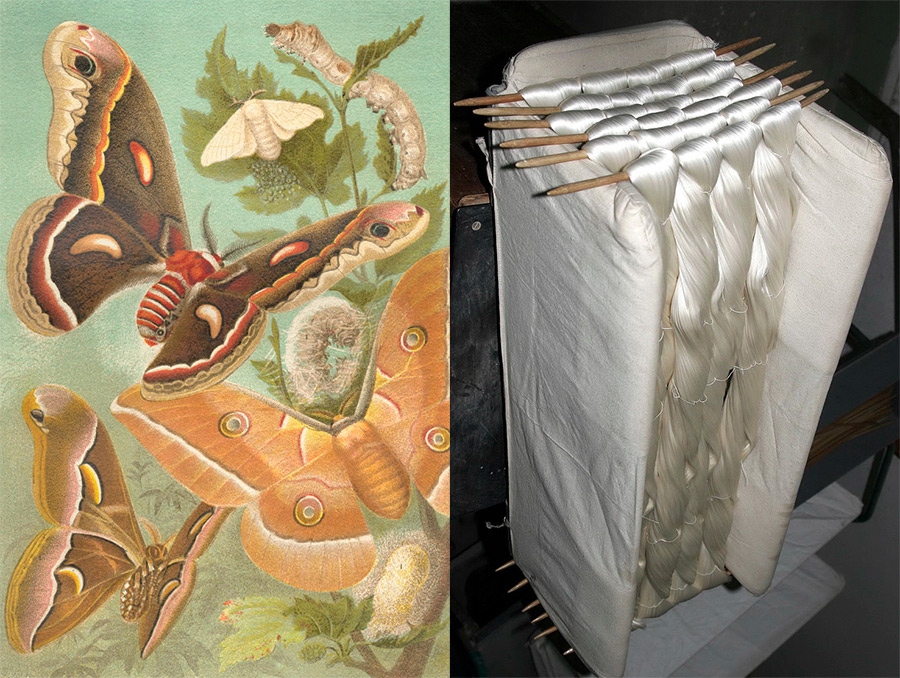
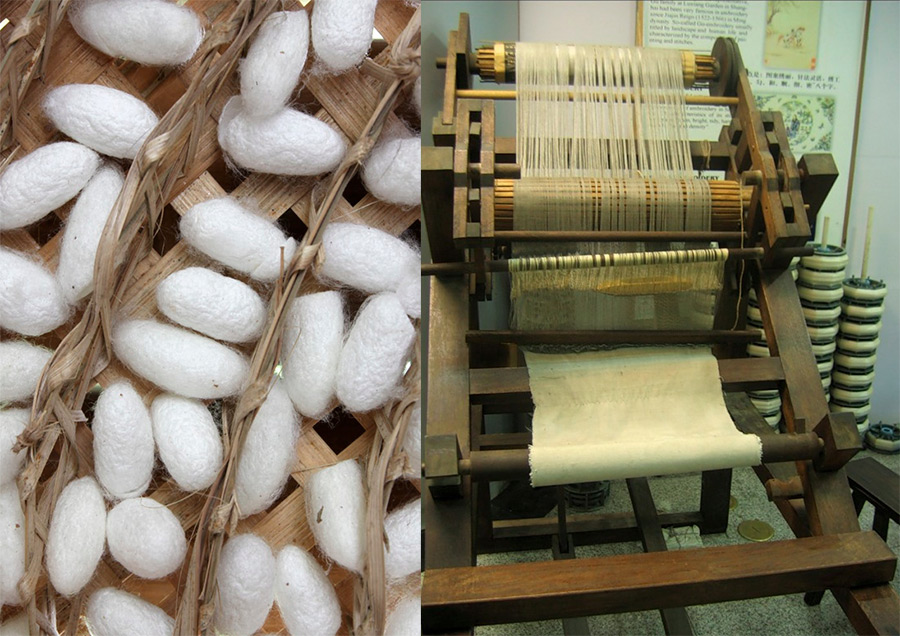
Natural silk - the history of the origin of the fabric
Legends tell that one of the Chinese women happened to see how a beautiful sparkling thread separates from a cocoon accidentally caught in hot water. And to another Chinese woman, whose name is known - Empress Xi Ling-chi (2640 BC), I wanted to grow a mulberry tree.
She grew a tree, but while she was growing, another person became interested in him - a butterfly, or, more simply, a moth. The butterfly began to feed on the fresh leaves of a young tree and immediately laid grena on its leaves - small eggs, from which caterpillars soon appeared.
Other legends tell that the Empress was drinking tea in the garden, and a cocoon from a tree fell into her cup. When she tried to pull it out, she saw a beautiful shiny thread reaching out for it. Be that as it may, but in China to this time silk is called "si", after the name of the empress. In gratitude for the discovery of silk, she was elevated to the rank of deity of the Heavenly Empire, and her memory is celebrated annually.
And what happened after the caterpillars appeared? Striving to become a butterfly, they begin to create a cozy house for themselves - a cocoon of the finest silk thread, or rather from two threads at once, twisting them around, and become pupae. Further, they are reborn into a butterfly, waiting in the wings to fly out. And everything repeats itself.
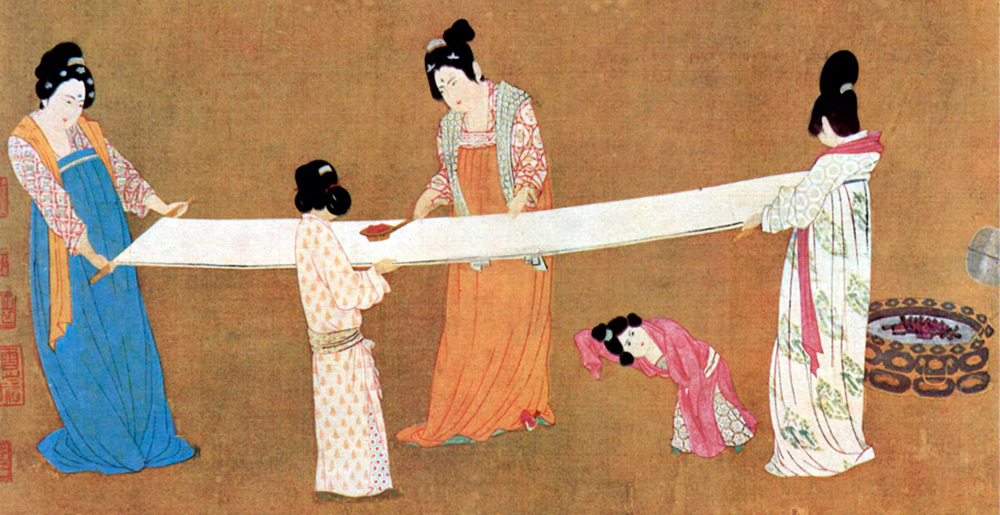
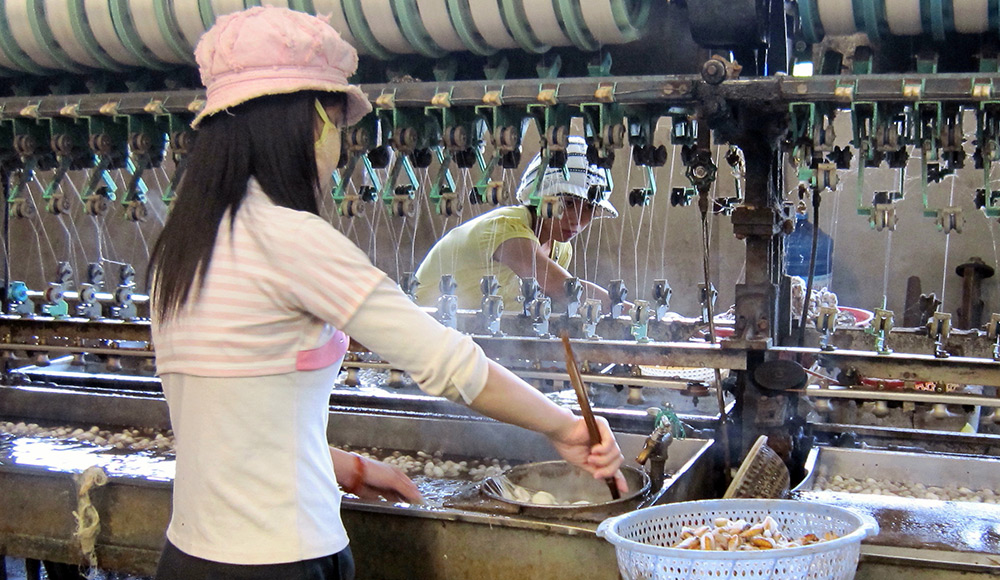
The Chinese realized what an important factor in the economic life of the country, silk thread can become. Subsequently, cocoons and silk became a means of exchange in ancient China, i.e. a kind of monetary unit.
Silk was used for the manufacture of clothing, religious jewelry, for the imperial house and its entourage. Caravans from all countries that came to China exchanged their goods for priceless fabric. China flourished. For further prosperity, it was necessary to keep the secret of making silk a secret. Everyone knew that for spreading secrets, death under torture.
Many centuries later, the secret was still revealed. The mystery of silk was smuggled first into Korea, then into Japan. The Japanese understood the importance of the new industry and gradually reached the level that had been building the country's global power for many years.
Then came India. Again, a Chinese legend tells us that a Chinese princess brought silk moth eggs and mulberry seeds to India. This was around 400 AD. Princess brought these valuables in her headdress. Perhaps it was so. One way or another, in India, in the valley of the Brahmaputra River, they began to master silkworm breeding.
Later, natural silk went through Persia to Central Asia and further to Europe. The Greeks were among the first to get acquainted with the beautiful silk fabric. The philosopher Aristotle, in his book Animal History, describes the silk caterpillar.The Romans also admired this fabric, especially for purple silk.
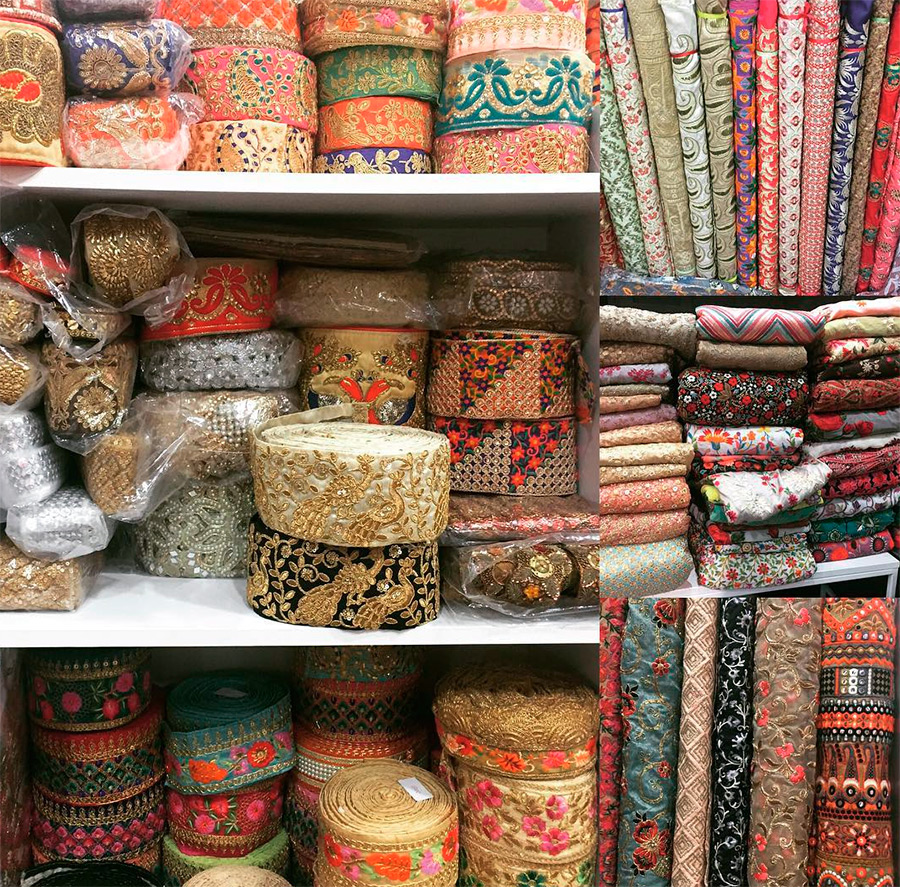
After the fall of the Roman Empire, the production of fabrics moved to Constantinople. Moth eggs and mulberry seeds were brought here with the assistance of Emperor Justinian in a hollow bamboo cane. The Western world received raw materials for silk production also through smuggling, and Byzantine silk production became world famous.
The early prelates of the Catholic Church were among the first in Europe to dress in silk. Their clothing and altar decorations were made of priceless fabric. The medieval nobility looked at all this with envy. Soon, judges and aristocrats began to dress in silk. But for a long time silk remained a treasure, for the sake of one kilogram of which they were ready to give a kilogram of gold.
The warriors of the Western world from the conquered East brought fabric for their wives and lovers. In ancient times, silk attracted attention not only for its beauty. It was believed that the delicate luxurious fabric heals a person from many diseases, in contact with the body.
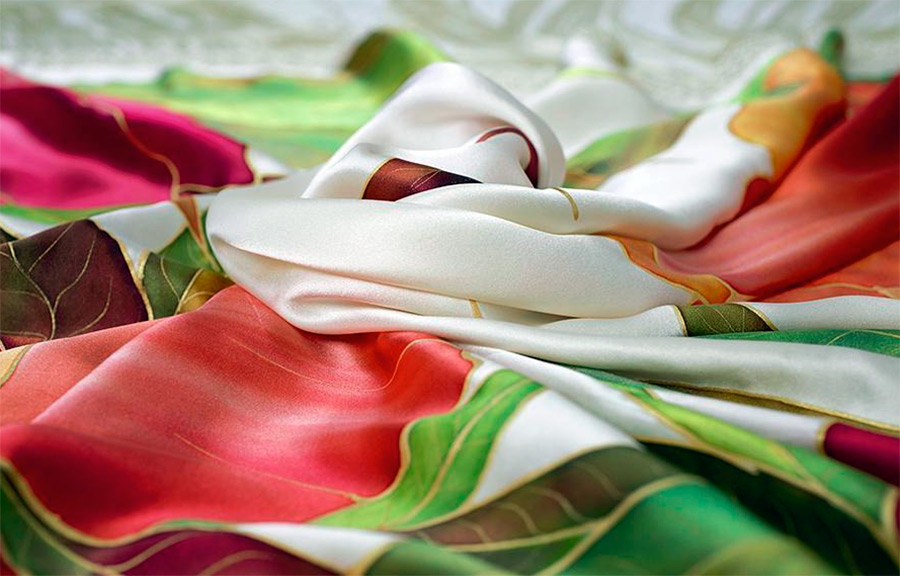
The Chinese have also succeeded in the ornamentation of fabrics. And when silk craftsmanship spread to Africa, Egypt, Spain and everything Middle East, then Islamic culture has somewhat changed the design of the precious fabric. Many patterns and images were retained, but decorative compositions and inscriptions appeared instead of human figures.
The first silk factory was built in Turin, this business was encouraged in cities such as Florence, Milan, Genoa, Venice.
In the Middle Ages, silk production became one of the main industries - in Venice in the 13th century, in Genoa and Florence in the 14th century, in Milan in the 15th century, and in the 17th century France became one of the leaders in Europe.
But already in the 18th century, silk production was established throughout Western Europe.
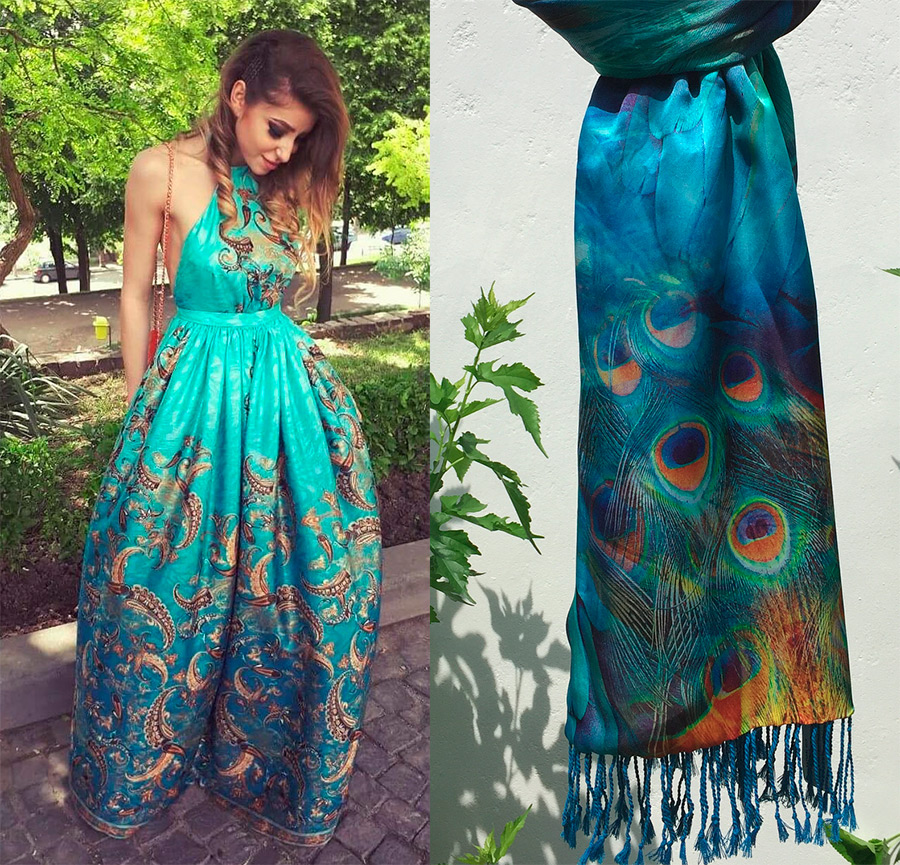
How are silk threads created?
Despite the capriciousness and whimsical care, silk products are very popular. Silk fiber is the excretion product of silkworm caterpillars. Silkworms are bred specifically in silkworm farms. There are four stages in the development of the silkworm - testicle, caterpillar, pupa, butterfly.
Protein metabolism takes place in the caterpillar's body. The proteins of the leaves of the mulberry tree under the action of the enzymes of the digestive juice of the caterpillar break down into individual amino acids, which in turn are absorbed by the body of the caterpillar. Further, some amino acids are converted into others.
Thus, by the time of pupation, a liquid substance is accumulated in the caterpillar's body, consisting of various amino acids necessary to create silk - fibroin and silk glue - sericin. At the moment of cocoon formation, the caterpillar secretes two thin silk threads through special ducts. Sericin is also released at the same time, i.e. the glue that glues them together.
The caterpillars that emerged from the testicles are no more than 2 mm in size, after 4-5 weeks they reach 3 cm.The process of creating a cocoon takes 4-6 days, while the caterpillar, as scientists calculated, must shake its head 24 thousand times to build its dollhouse. This is how the silkworm is transformed into a pupa.
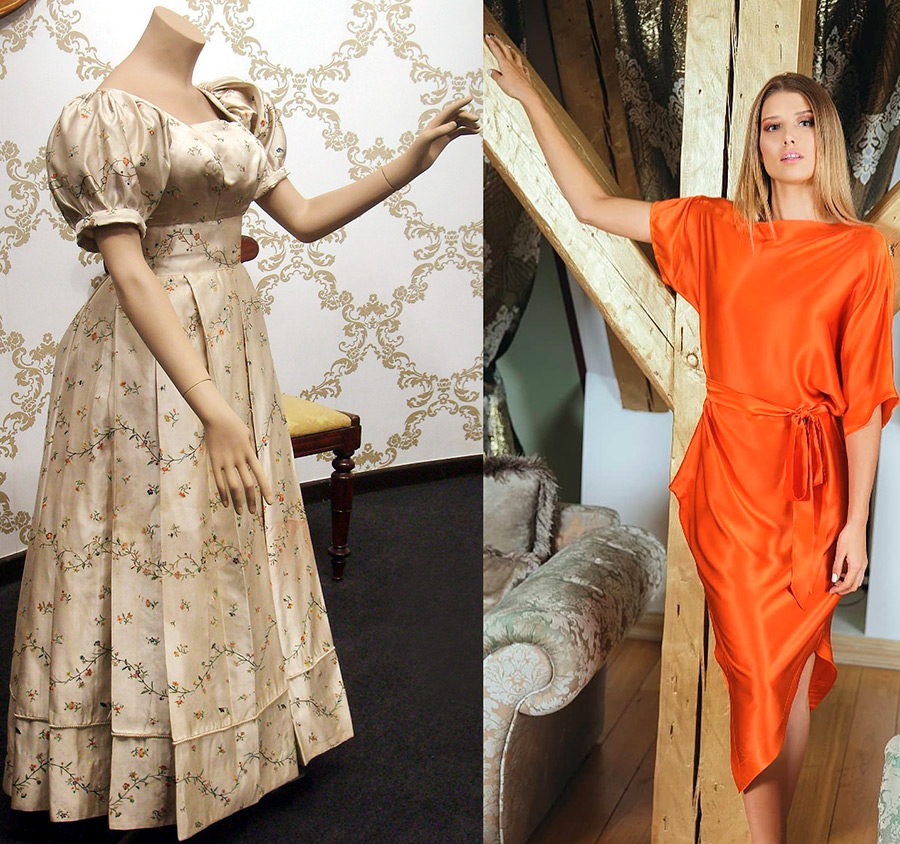
Together with the pupa, the cocoon weighs 2-3 grams. Then, after about two weeks, it transforms into a butterfly, which is as plain as a moth.
Turning into a butterfly in silk production cannot be allowed, since it, trying to break free, will spoil the integrity of the silk thread. What are they doing? Cocoons are fried in an oven, then treated in a chemical solution, sometimes in ordinary boiling water. This is done so that the sticky substance evaporates, and the cocoon collapses and disintegrates into threads.
These caterpillars are not only the creators of silk, but also served as the prototype of spinnerets - mechanisms for the formation of artificial silk thread. If you carefully observe the phenomena occurring in nature, then you can discover a lot for yourself, and you cannot imagine better than nature.
Currently, in addition to China, many countries are engaged in silk production: India, Japan, Korea, Thailand, Uzbekistan, Brazil and many others.
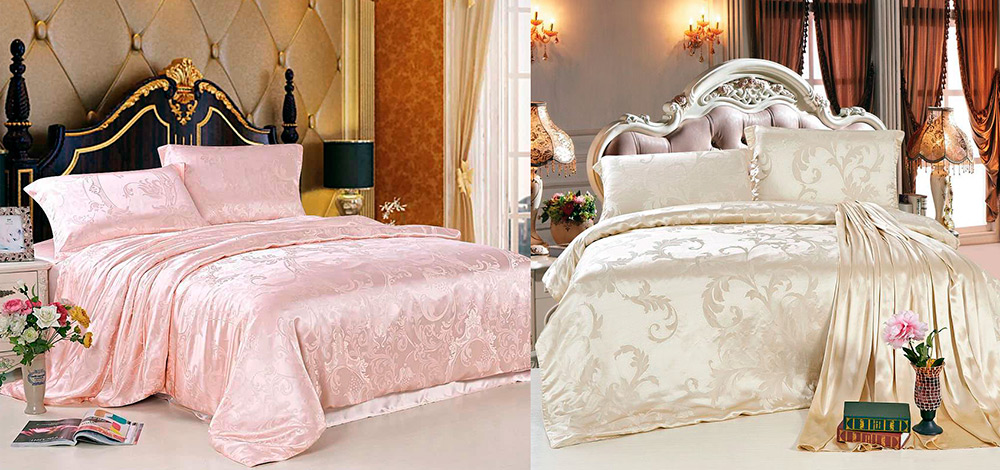
Features of the production of natural silk
Sericulture is a very delicate production. It consists of several stages:
1. Getting silkworm cocoons. The female silk butterfly lays approximately 500 eggs. They are sorted, leaving only healthy ones. After 7 days, small silkworm caterpillars appear, which are fed with mulberry leaves, having previously selected and chopped. Then the caterpillars begin to wind cocoons-houses. This happens for several days until they completely twist themselves. Then they are sorted again by color, shape, size.
2. Unrolling of cocoons. The pupa is killed so that it does not hatch and damage the cocoon. Then the cocoon is immersed in boiling water in order to dissolve the adhesive and separate the threads.
3. Creation of silk threads. One cocoon can produce up to 1000 m of thread. Up to 5-8 threads are twisted into one fiber, a rather long silk thread is obtained. This is how raw silk is obtained, which is then wound into skeins. And again sorted and processed to the best density and uniformity. Can now be sent to a weaving mill.
4. Fabric making. The yarn is soaked and reworked and dyed. Now weaving begins, which uses various weaves.
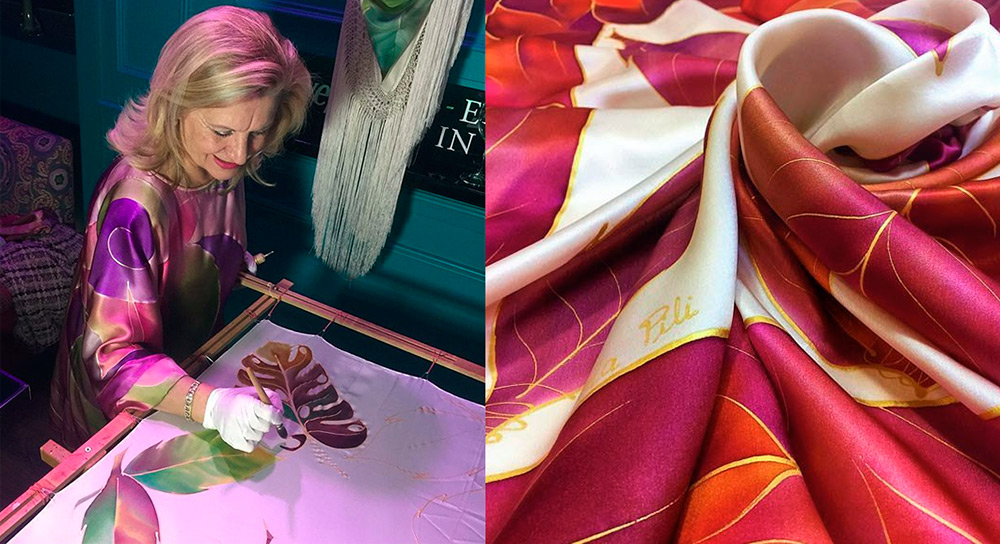
Types and properties of silk fabrics
Silk properties. Silk is a soft and durable material, it is glossy and smooth, but at the same time it has its own complex character, it is capricious and demanding to care for. Delicate flowing fabric does not like iron and is susceptible to moth attacks.
Silk thread is elastic. It is firm, shiny and well-colored. Why are silk fabrics different? This is due to the genus of insect and plant leaves that the caterpillars feed on. The thinnest silk is obtained from three silk threads (in three cocoons), and ordinary fabric - from eight to ten cocoons.
The silkworm produces fiber for satin, taffeta, satin, chiffon, organza. Denser fabrics - tassar, maga, eri are made from fibers, "Indian" caterpillars, which feed on the leaves of castor bean, oak and polyantas tree.
Silk threads are of different types. It all depends on the country where the silkworm caterpillars were grown, the conditions (natural environment or artificial), as well as the leaves with which they were fed - mulberry, oak, castor (castor oil) and others.
All this determines the features of the future fabric. Different types of weaves also create different types of fabrics that differ in properties, appearance and other parameters.
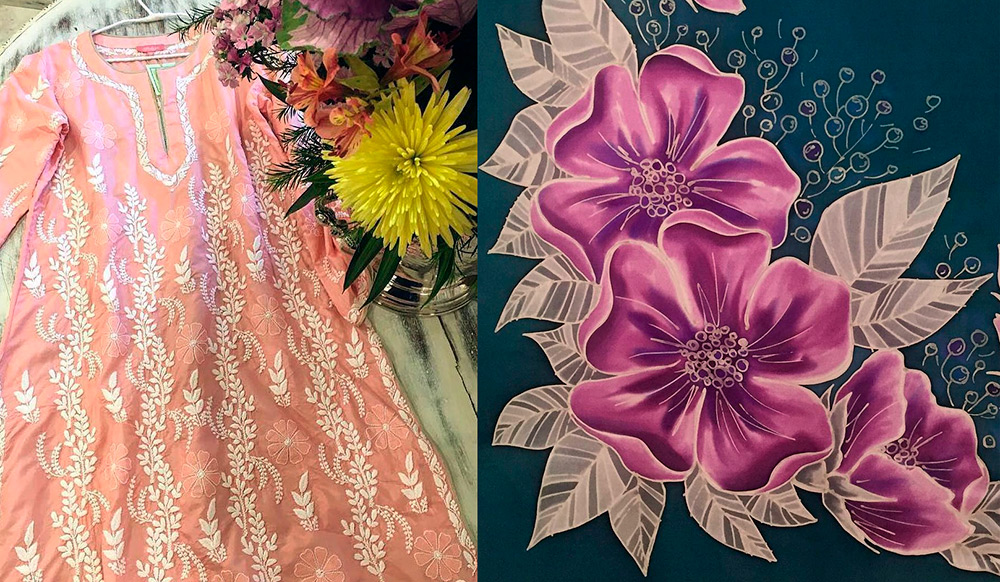
Popular types of silk fabrics with various weaves are:
Toile silk. Natural silk fabric with plain weave. It has a soft sheen, is quite dense, holds its shape well, and therefore is suitable for ties, dresses and linings.
Atlas. This is a silk satin weave fabric. Differs in density, smoothness and shine on the front side, soft enough, well draped. They are used for sewing clothes and shoes, as well as for decorative upholstery of furniture.
Silk satin. This is a satin weave fabric. The fabric is smooth, silky on the front side, dense and shiny. Dresses, blouses, skirts and men's shirts are sewn from this fabric.
Crepe. The fabric is made of threads with a large twist, which is called crepe, it is distinguished by its roughness, light sheen. Crepe combines several types of fabrics: crepe satin, crepe chiffon, crepe de chine, crepe georgette. These fabrics drape well and are used for sewing dresses and suits.
Chiffon. Silk plain weave fabric. Very soft and thin fabric, matte, slightly rough, transparent, well draped. This fabric is used to make beautiful dresses for special occasions.
Organza. A fabric that is stiff, thin and transparent. It is smooth and shiny and holds its shape well.Dresses are sewn from it as a wedding dress, used for decorative trim - flowers, bows.
Gas. The fabric has a gauze weave. The main properties can be called lightness, transparency, which is achieved by a large space between its threads, keeps its shape well, does not have a shine. Most often used for decorative trim, for wedding dresses.
Chesucha (wild silk). The fabric is dense, with an interesting texture, which is formed using threads of unequal thickness. The material is durable, soft, with a slight sheen, drapes well, used for curtains and various clothes.
Silk Dupont. The fabric is very dense, one might say, tough, with a soft sheen. Used for sewing curtains. The Indian dupont is especially prized. In addition to curtains, wedding and evening dresses, various accessories and expensive bed linen are sewn from it.
Taffeta. Taffeta can be made not only of cotton, but also of silk fabric. Differs in high density and stiffnessthanks to tightly twisted silk threads. When sewing, it forms folds that add volume and splendor to the product. Curtains, outerwear and evening dresses are sewn from it.
In addition to these, there are other types of silk fabrics, for example, crepe georgette, crepe de chine, silk pontage, muslin, brocade, excelsior, charmeuse, twill, silk cambric, foulard.
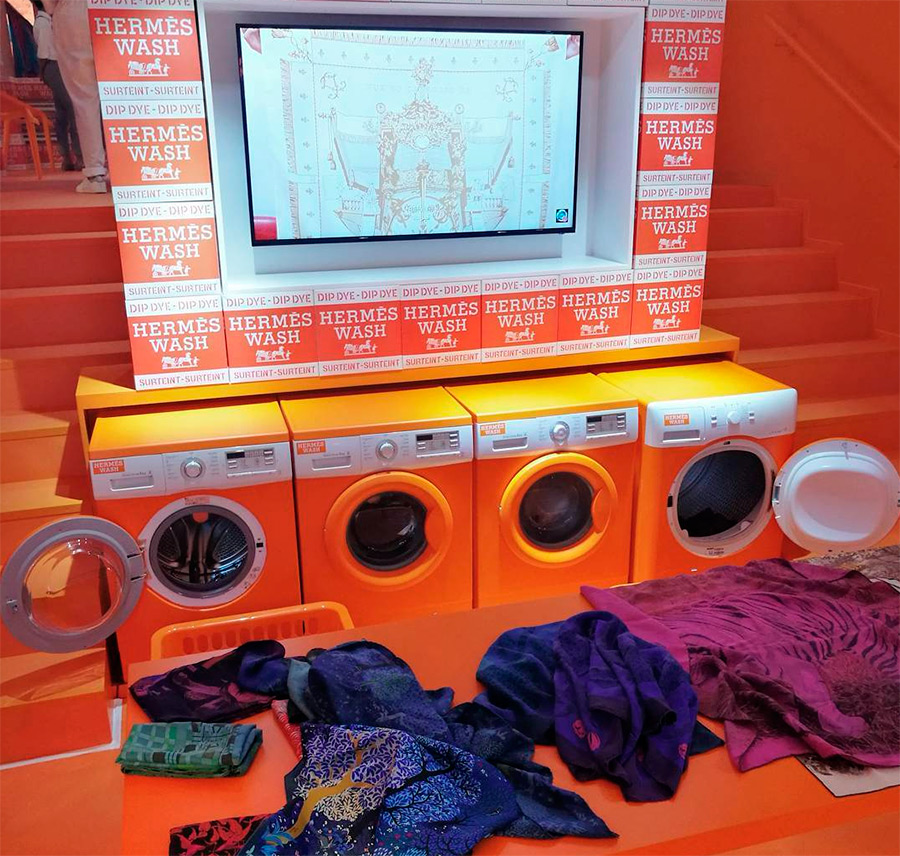
Proper care of natural silk clothes
Silk, as already mentioned, is a fabric with character, therefore it requires a careful attitude towards itself.
Basic care recommendations:
1. Natural silk is essentially a protein, similar to the human epidermis, and therefore does not tolerate high temperatures. It should be washed in water no higher than 30 degrees.
2. Use special detergents designed for silk products. Alkaline powders can ruin delicate items.
3. If you use a hand wash, do not wrinkle and rub the product unnecessarily - this can ruin the structure of the fabric.
4. If you wash in a typewriter, then you need to do it only in the "Silk" or "Delicate wash" mode.
5. It is not recommended to bleach - the fabric will not only wear out quickly, but will also turn yellow.
6. Do not use fabric softeners.
7. The last rinse is best done in cold water with vinegar. This will rid the fabric of alkaline residues.
8. Do not twist the product too much, dry it in a machine drum or in the sun.
9. Ironing should be done from the inside out on the "Silk" mode.
10. Avoid contact with silk products with deodorants, perfumes, hairspray and other substances that contain alcohol. Besides sweat also spoils silk.
11. Silk products are best dry cleaned.
Anyone can grow a silkworm if they wish. You need to have a utility room and a mulberry tree. The silkworm for humans is the most useful insect after the bee. But, unlike bees, this butterfly is difficult to survive without the constant care of people.
When the secret of silk production became the property of Japan, and the Japanese prince Sue Tok Daishi left an interesting testament to his people regarding silkworm breeding and silk production:
“… Be as attentive and gentle to your silkworms as a father and mother to their nursing child… let your own body serve as a yardstick for changes in cold and warmth. Observe that the temperature in your homes is even and healthy; watch the purity of the air and bring into your work incessantly, day and night, all your solicitude ... ".
And so, natural silk is obtained from the cocoon of a silkworm caterpillar. But there are also artificial and synthetic types of silk fabrics. All of them have the unique properties of natural silk: shine, smoothness and durability.
Now in the world, silkworm breeding continues to be engaged, especially in Southeast Asia.
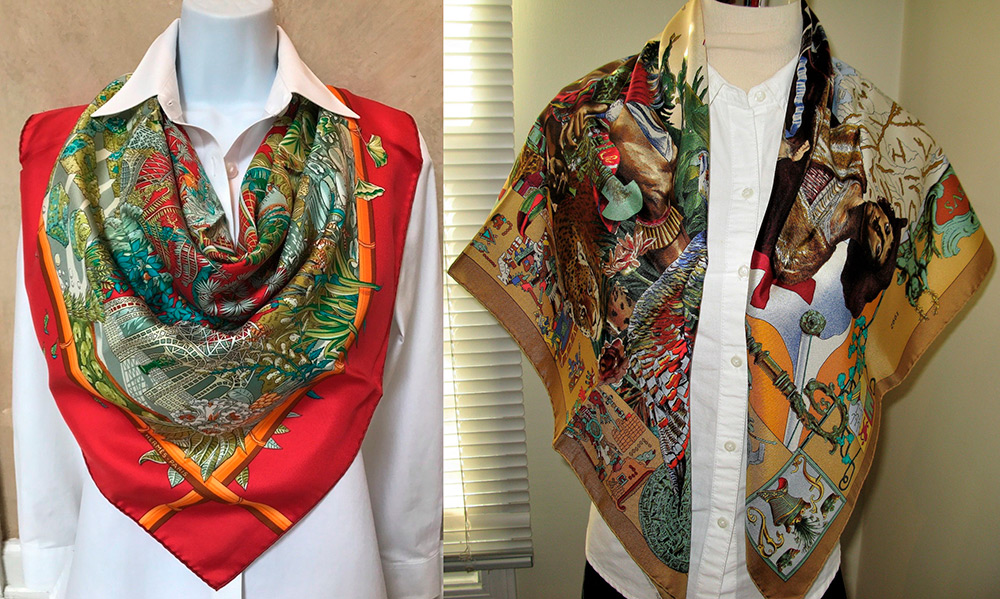
Hermes silk scarves
Natural silk from the Crimea peninsula
I would like to remind you that the Crimean silk has always competed with the eastern one. Sericulture was once developed on the peninsula. Crimean Tatars bred silkworms and were engaged in the production of silk, they perfectly mastered this craft, and even made silk clothes.
The glory of the Crimean silks was known to the whole world. Once upon a time, Indian Prime Minister Indira Gandhi wore a sari made of the famous Crimean silk on all his trips abroad. And today there are still those master craftsmen, with the help of whom it is possible to create a powerful silk production.
If silk production is established in Crimea, then in a short time the glory of the peninsula will again thunder throughout the world, and Crimean silk will become a reliable source of income for the inhabitants of Crimea.
Comments and Reviews
Add a comment
Similar materials
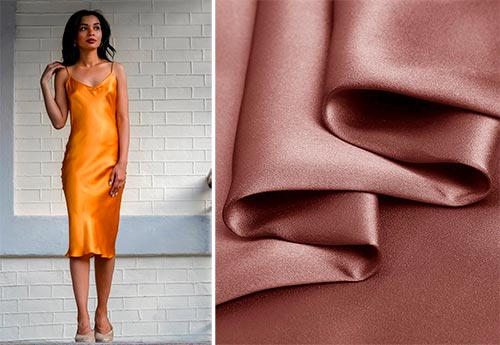 All about silk: how to distinguish natural and how to care
All about silk: how to distinguish natural and how to care
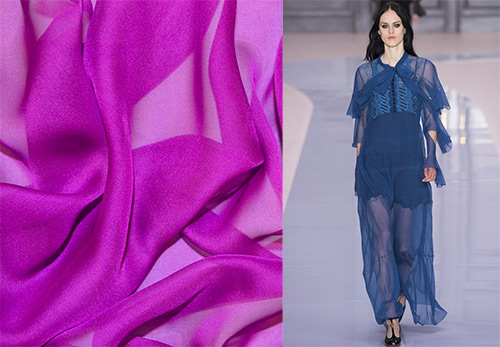 Chiffon fabric and the best chiffon dresses
Chiffon fabric and the best chiffon dresses
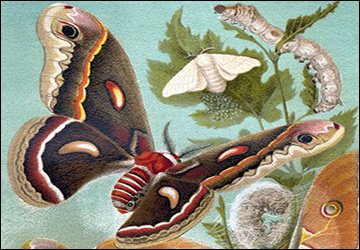 Butterfly mystyle.decorexpro.com/en/ and wild silk
Butterfly mystyle.decorexpro.com/en/ and wild silk
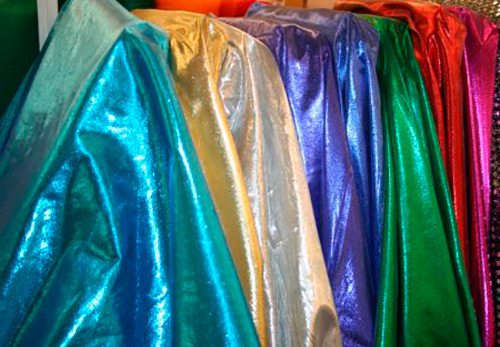 The story of a luxurious llama fabric with shiny metallic thread
The story of a luxurious llama fabric with shiny metallic thread
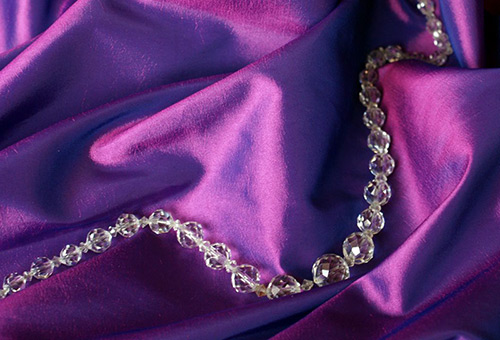 Taffeta fabric - varieties and care
Taffeta fabric - varieties and care
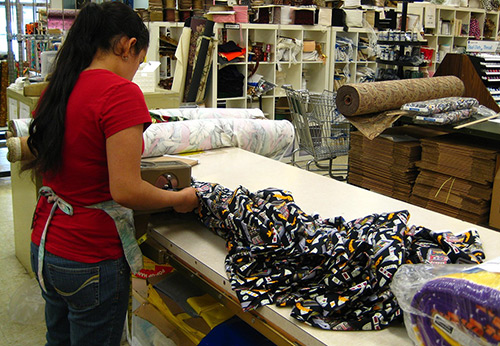 Beauty and properties of fabric - crepe-morocin
Beauty and properties of fabric - crepe-morocin
Rating news
Shades of clothing that make women look younger
What shades of hair make women younger: rules and photos
Funny wedding dresses - photos and ideas
12 most expensive down jackets for the winter
How to look 25 at 40: tips from supermodels
Beautiful schoolgirls
Anti-aging haircuts and hairstyles for women
Fashionable skirts for autumn and winter
Fashionable women's trousers for the cold season
Fashionable and stylish sandals for summer 2024
Spring-summer 2024
 Fashionable dresses and tops with thin spaghetti straps
Fashionable dresses and tops with thin spaghetti straps
 Bandana tops: how to wear stylishly and beautifully
Bandana tops: how to wear stylishly and beautifully
 How to put together the perfect men's wardrobe for the summer
How to put together the perfect men's wardrobe for the summer
 Fashionable shorts for spring-summer 2024
Fashionable shorts for spring-summer 2024
 Fashionable skirts for spring-summer 2024: a guide to online shopping
Fashionable skirts for spring-summer 2024: a guide to online shopping
 The most fashionable dresses spring-summer 2024: styles and colors
The most fashionable dresses spring-summer 2024: styles and colors
 Fashionable total look 2024: ideas of images and trends
Fashionable total look 2024: ideas of images and trends